Fiddle leaf figs are equally beloved and notorious in the houseplant world. When they’re big & healthy, a fiddle can make a room. We’ve all seen the glossy magazine shots to prove it. But they can also leave you feeling like a good-for-nothing plant killer when they droop & die. Luckily I’ve got some simple methods to keep your fiddle leaf fig happy, thriving, and looking its best.
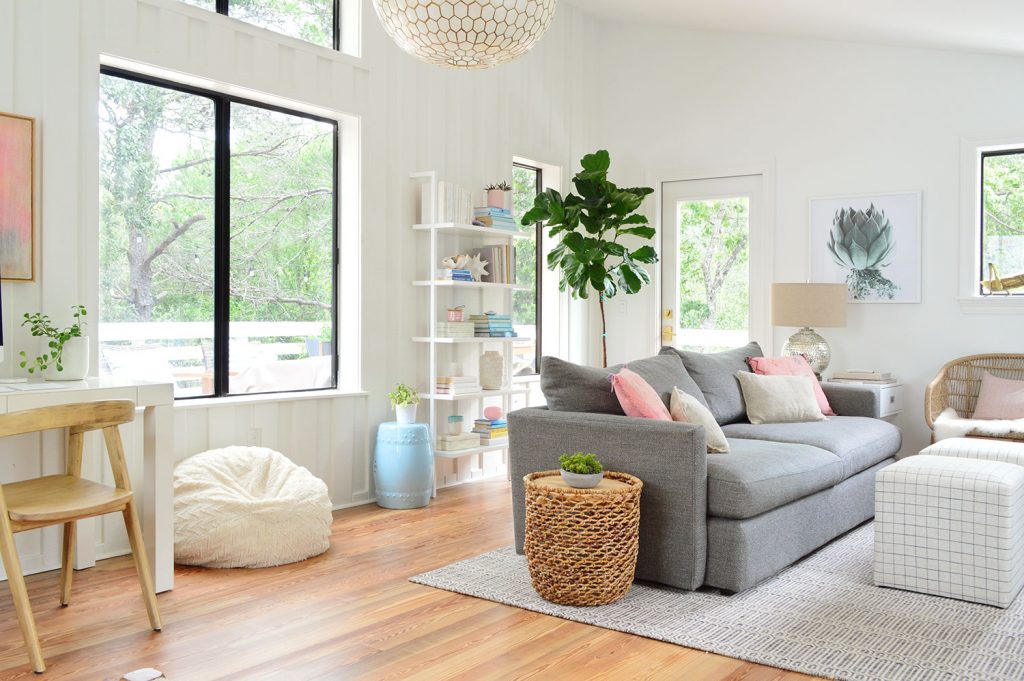
Fiddle leaf figs (Ficus lyrata) are native to African rainforests, so they thrive in sunny and humid environments. So the better you can recreate those conditions for it in your home, the happier it will be. That’s why keeping a fiddle leaf fig alive boils down to three things: location, watering, and maintenance.
Easy Fiddle Leaf Fig Care
Caring for your fiddle leaf fig is easier than it sounds. These are the simple steps we follow for any fiddle leaf fig we buy:
- Find a nice sunny spot in your home
- Don’t move it (ever!)
- Dump 2-3 cups of water on it every 10 days or so
- Optional: Close or redirect air vents so hot or cool air isn’t blasting it
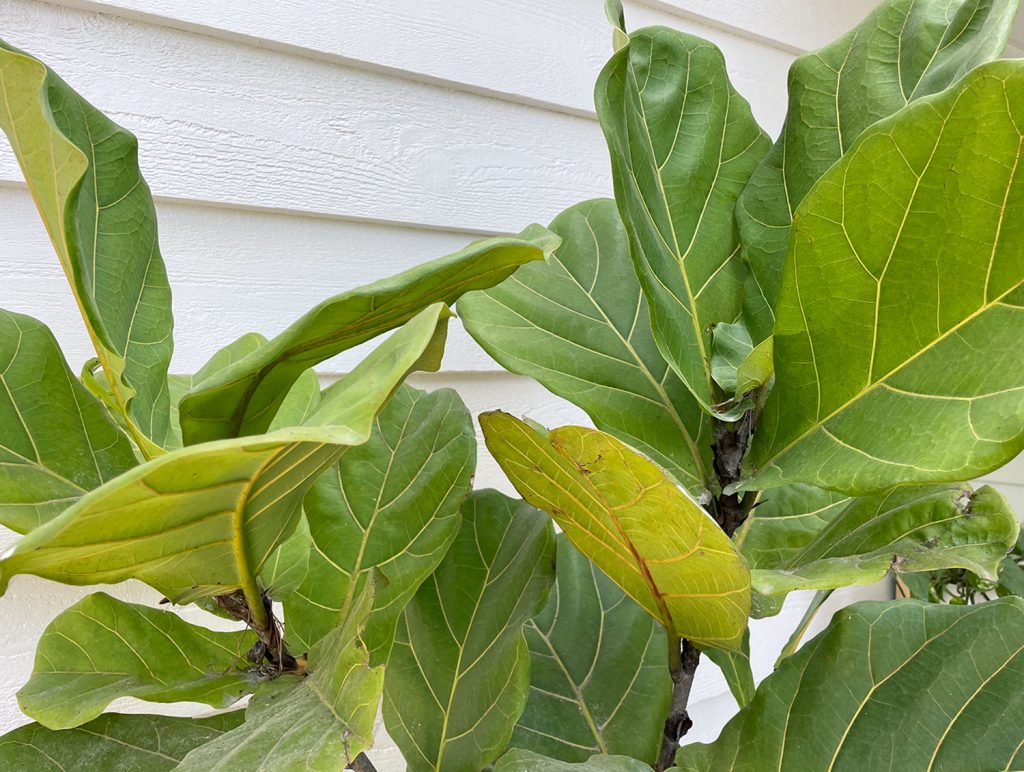
We’ll give you more detail in the rest of this care guide, but keep these basics in mind. It will help you stress less and enjoy your leafy buddy more!
Where To Put Your Fiddle Leaf Fig
Location, location, location! Finding the right spot in your home is half the battle with fiddle leaf fig care. They do best in sunny spots with bright, indirect light. Corners like the one in our office below are a perfect example. It gets light from two big windows and, because the room is south-facing rooms, it stays sunny for more hours of the day. If you have a spot like this in your home, you’ve already set yourself up for success.

Once you’ve found a great location for your fig: don’t move it! This is probably the #1 thing to remember. Fiddle leaf figs are very sensitive to environmental changes and relocating them for extended periods can trigger a downward spiral. That’s why being thoughtful with your placement is an important first step.
Fiddle leaf figs also don’t like drafty locations. Be sure to keep it away from doors, open windows, and especially air vents (we killed one this way accidentally). Again, they’re sensitive to change – even temporary changes in temperature. If it must go near an air vent, consider closing or adding a diverter to keep your heat or A/C from blowing on it.
Watering a Fiddle Leaf Fig
Fiddle leaf figs love water, but overwatering can also be a frequent cause of issues. It may take some time to learn how much your particular plants need watering, but – like I said above – I’ve found most of mine like 2-3 cups of water every 10 days. This helps mimic their native rainforest environment where they’re used to heavy downpours with dry spells in between.
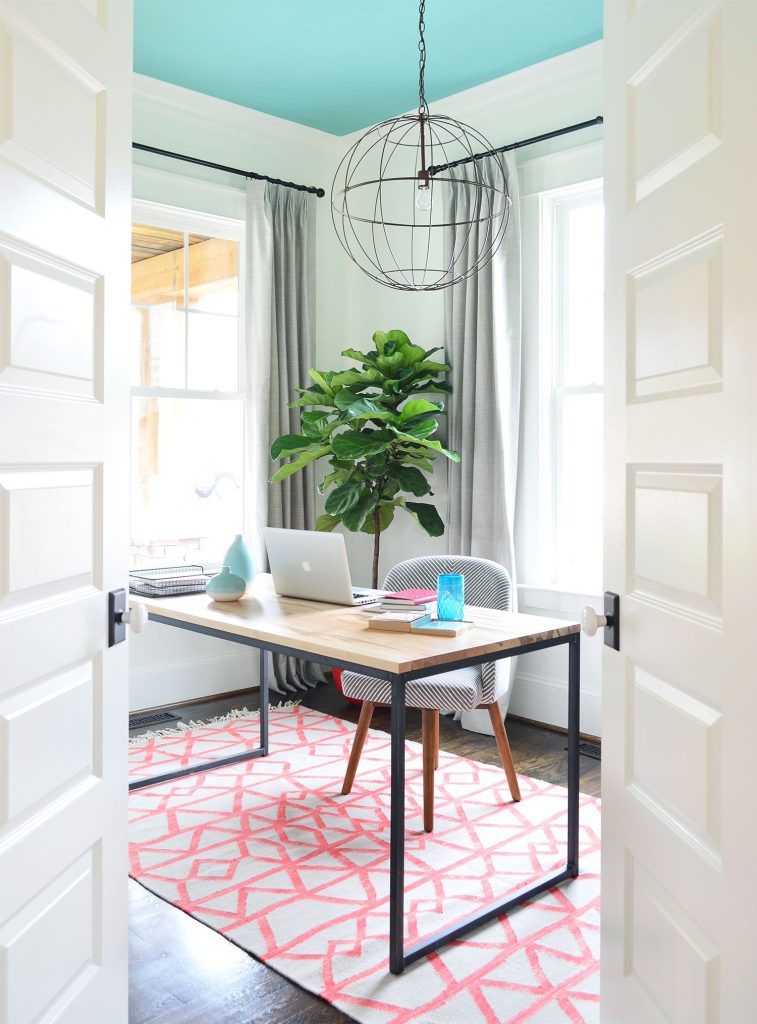
How to check when a FLF needs water
The easiest way to check if it’s time to water your fiddle leaf fig is by checking the soil. Stick your finger into the top 2-3 inches of the pot. If it’s dry, time to water. If it’s still moist, let it time to dry out first. You can also buy a soil moisture meter for less than $10 if you’d rather keep your fingers clean.
Another way to tell a fiddle leaf fig may need water is droopy leaves. Still, be sure to check for dry soil to make sure underwatering is the culprit before adding water.
Two ways to water a FLF
Like most houseplants, you can water a fiddle leaf fig by either (1) pouring water onto the soil or (2) soaking it in water. I prefer #1 because carrying a watering can around is easier than lifting my big pots into the tub. If you choose #2, just fill up a sink, tub, or other basin with a few inches of water and let the fig soak up moisture from the bottom.
Whichever method you choose, it’s important to let the water fully drain. In the sink or tub, this means letting your plant sit for another hour or two after you’ve emptied the standing water. In a pot, this means making sure there is no standing water at the bottom.
How do I know if I’m overwatering?
Brown spots on leaves are the clearest sign that your FLF is overwatered. Fiddles like their soil to dry out fully before being watered again, so if yours is getting too much water or is sitting in water, root rot may set in. You can’t save individual leaves once they’ve started to brown, but you can take steps to stop root rot before it kills the whole plant.
Fiddle Leaf Fig Care
I’ll be honest, we don’t do a lot of “maintenance” when it comes to our fiddle leaf figs. Apart from watering, we largely leave them alone. But there are some best practices for helping them thrive that you can incorporate to get the most out of your FLF.
Dusting and cleaning leaves
We dust our fiddle leaf figs as needed, using a basic dusting pad or damp cloth. We primarily do this to maintain its appearance, but cleaning its leaves also helps it soak in as much sunlight as possible. You can also purchase plant wipes or spray to really make them shine!
Pruning
Removing browning leaves can help your fiddle leaf fig focus its energy on new growth. Use sharp pruning shears to cut the leaf at an angle, just a bit past the part where it connects to the trunk (the node). Don’t trim more than 5-10 leaves at a time to avoid shocking the plant. You can also use this method to shape your fiddle, like removing lower leaves to give it a tree-like appearance. There are also methods to encourage new growth at the top.
Rotating and shaking
It’s a good idea to rotate your fig a little bit every time you water. This helps all sides receive equal light and discourages your fig from growing to one side. Some people also use this time to give their fiddle leaf figs a little “wind therapy.” Giving your plant a gentle shimmy at the trunk helps simulate its natural, outdoor environment. While not necessary, this can help strengthen its trunk so you won’t have to stake it as it grows taller.
Repotting
Eventually, your fig may outgrown its existing pot and will need to be transferred to a new, large one. However, don’t rush to do this, as it may shock your FLF unnecessarily. Some people repot their fiddles as soon as they purchase them, but we’ve never done this. We’ve been told that the trip home is already hard enough on your plant, so there’s no reason to make it worse.
Actually, the only repotting we’ve ever done is outside. Yes, here in Florida we’ve had great success with keeping our fiddle leaf figs outside. So did eventually repot some of these shown below directly into the ground!
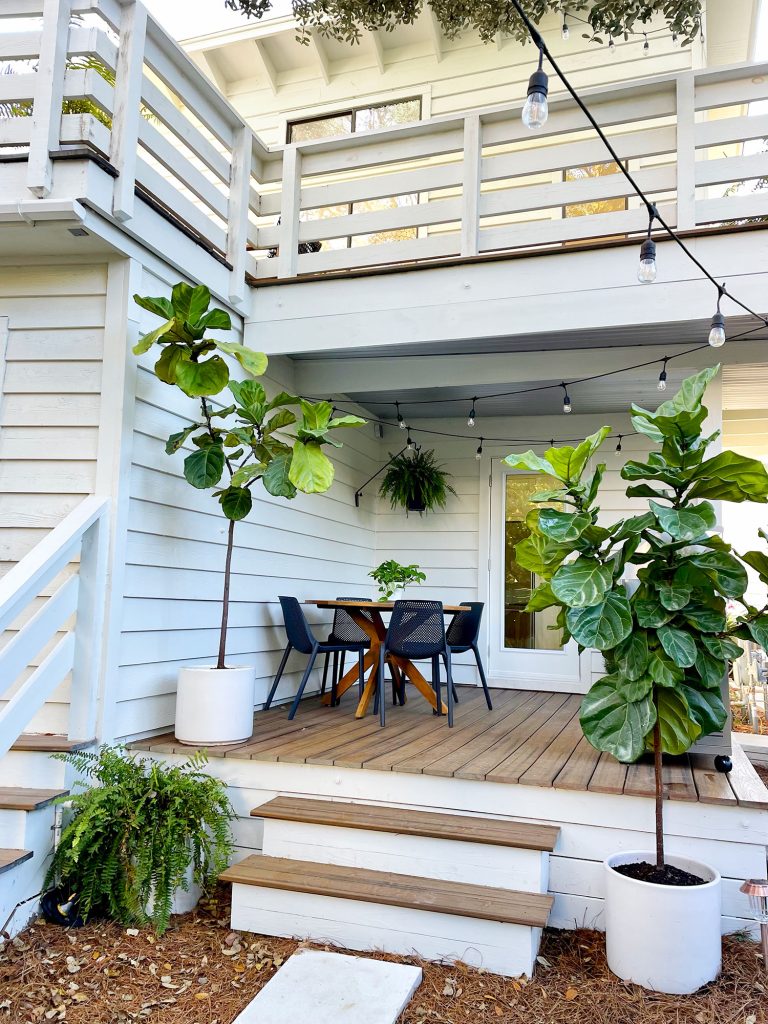
We hope this shows that caring for a fiddle leaf fig doesn’t need to be complicated. Again, just remember it takes a good location, regular deep watering, and some basic maintenance. With that, you’ll be one step closer to having your house magazine ready!
More Plant Guides
If you’re looking for more information on some of our favorite plants, check out some of these posts below:
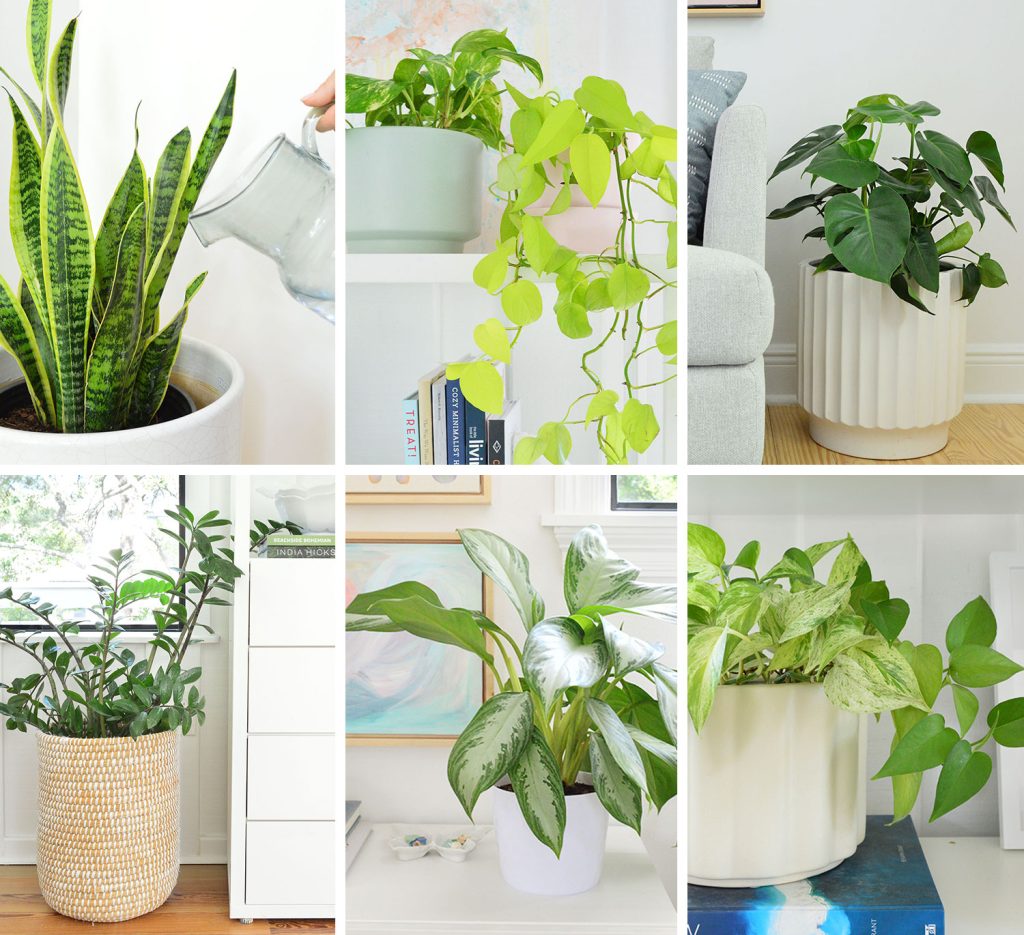
- Best Low-Light Houseplants
- Best Air Purifying Indoor Plants
- Neon Pothos Care Guide
- Golden Pothos Care Guide
- Marble Queen Pothos Care Guide
- Snake Plant Care Guide
- Corn Plant Care Guide
- Tree Philodendron Care Guide
- Aglaonema Plant Care Guide
- Monstera Deliciosa Care Guide
- How to Build An Easy Plant Shelf
- Make A DIY Wire Trellis
- Protecting Outdoor Plants In A Deep Freeze
*This post contains affiliate links
